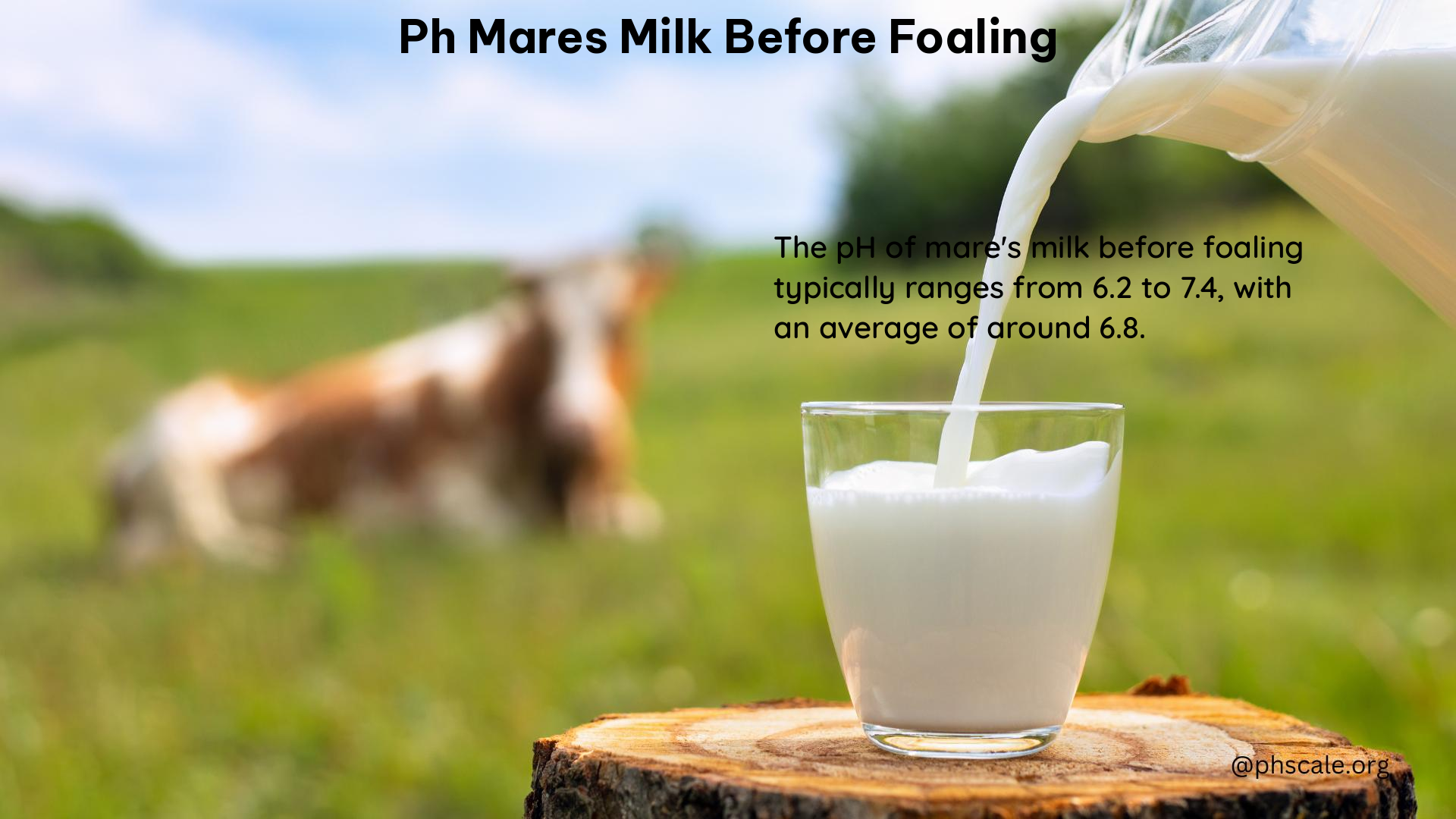The pH level of a mare’s milk before foaling is a crucial indicator in predicting the timing of parturition. By closely monitoring the pH changes in the mare’s milk, veterinarians and horse owners can better prepare for the impending birth and ensure the health and safety of both the mare and the foal.
pH Range and Decrease
- Initial pH Range: The pH of mammary fluid from pregnant mares remains around 7.4 for several days leading up to foaling.
- Decrease Before Foaling: The pH of the milk begins to decrease four days prior to parturition and significantly decreases on the day of foaling.
- Critical pH Level: If the pH is less than or equal to 6.4, the mare has a high likelihood (97.7% to 98%) of foaling within the next 72 hours.
Testing Methods

There are two primary methods for testing the pH of a mare’s milk before foaling:
pH Test Strips
pH test strips can be used to measure the acidity of the mammary fluid. A pH paper that detects pH in the range of 6.0 to 8.0 in increments of 0.4 is recommended for this purpose.
Electronic pH Meter
An electronic pH meter is more accurate but more expensive. This option may be preferred by veterinarians or experienced horse owners who require a higher level of precision in their measurements.
Clinical Signs and Prediction
In addition to monitoring the pH of the mare’s milk, there are several other clinical signs that can help predict the timing of foaling:
- Mammary Gland Development: The mammary gland begins to enlarge a couple of weeks prior to term, and teats fill with milk in the last few days before foaling.
- Waxing of Teats: A thick dried exudate often accumulates at the ends of the teats 24 to 48 hours prior to foaling, indicating imminent foaling.
By observing these physical changes in the mare, along with the decreasing pH of her milk, horse owners and veterinarians can better anticipate the arrival of the foal.
Contaminants and Chemicals
There are several chemical factors that can influence the pH of a mare’s milk before foaling:
- Calcium Carbonate: The calcium carbonate content of the milk increases from 100µg/g to 500µg/g as time to parturition decreases.
- Electrolytes: The pH decrease is correlated with electrolyte concentrations in prefoaling mares.
Understanding these chemical changes can help veterinarians and horse owners interpret the pH readings more accurately and make more informed decisions about the mare’s health and the timing of foaling.
Home Remedies and Solutions
For horse owners who want to monitor the pH of their mare’s milk at home, there are a few simple steps they can take:
- Regular pH Testing: Regularly test the pH of the mare’s milk to monitor the decrease in pH, indicating impending foaling.
- Monitoring Clinical Signs: Closely observe the mare for clinical signs such as mammary gland development, waxing of teats, and relaxation of the croup muscles.
By combining these two approaches, horse owners can better predict the timing of foaling and ensure that they are prepared for the arrival of the new foal.
In conclusion, the pH of a mare’s milk before foaling is a valuable tool for predicting the timing of parturition. By understanding the range of pH values, the testing methods available, and the associated clinical signs, veterinarians and horse owners can better prepare for the birth of a healthy foal.
References
Wright, D. E. (2016). Can foaling be predicted within 24-hours by testing the pH of the mare’s milk? Oklahoma State University. https://shareok.org/bitstream/handle/11244/52372/oksd_wright_HT_2016.pdf?isAllowed=y&sequence=1
Veterinary Partner. (2013). pH Testing of Milk Predicts Foaling Time In Mares. https://veterinarypartner.vin.com/default.aspx?catId=102906&id=4952321&pid=19239
Kentucky Equine Research. (2018). Predicting Time of Foaling. https://ker.com/equinews/predicting-time-foaling/
